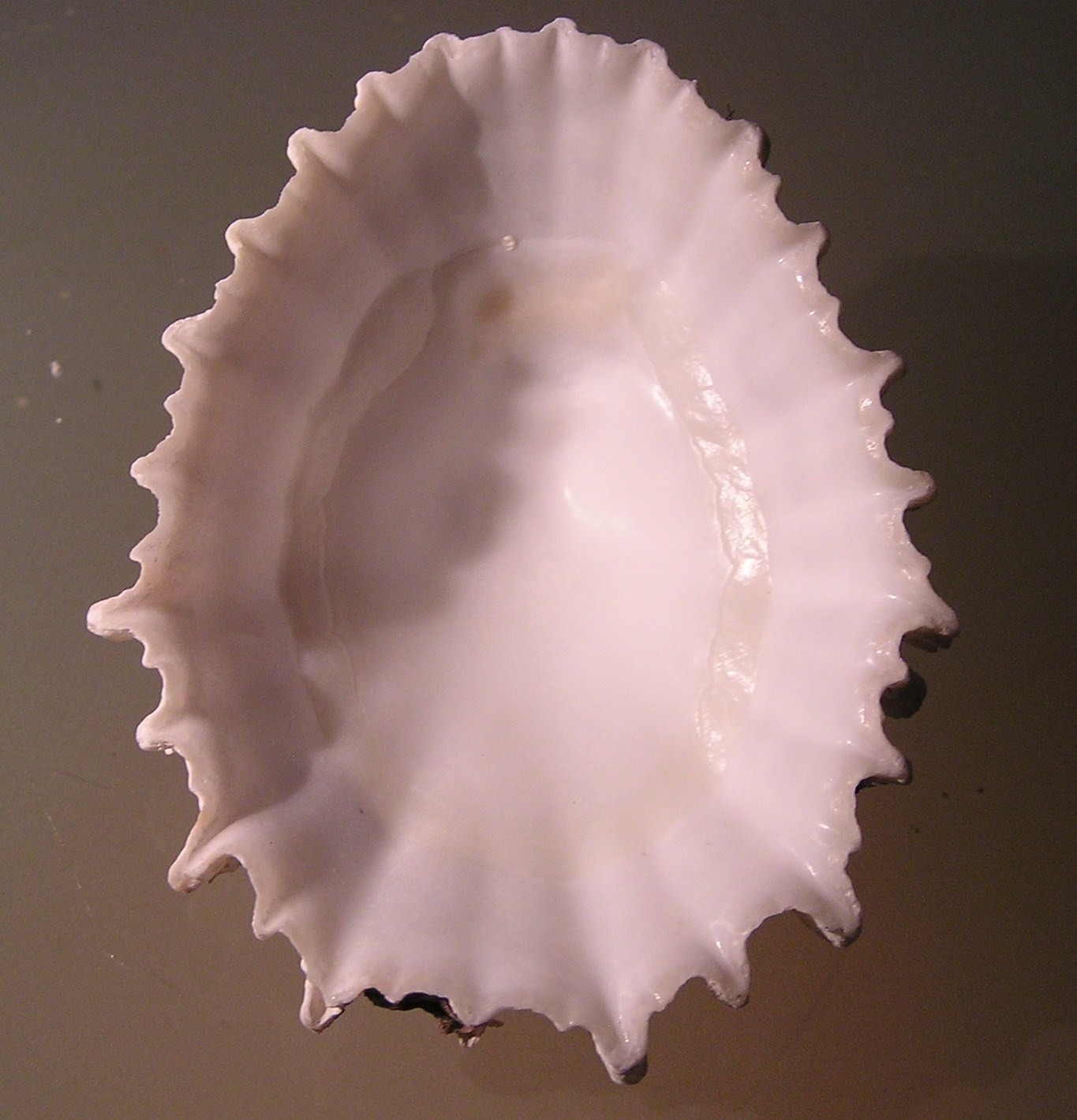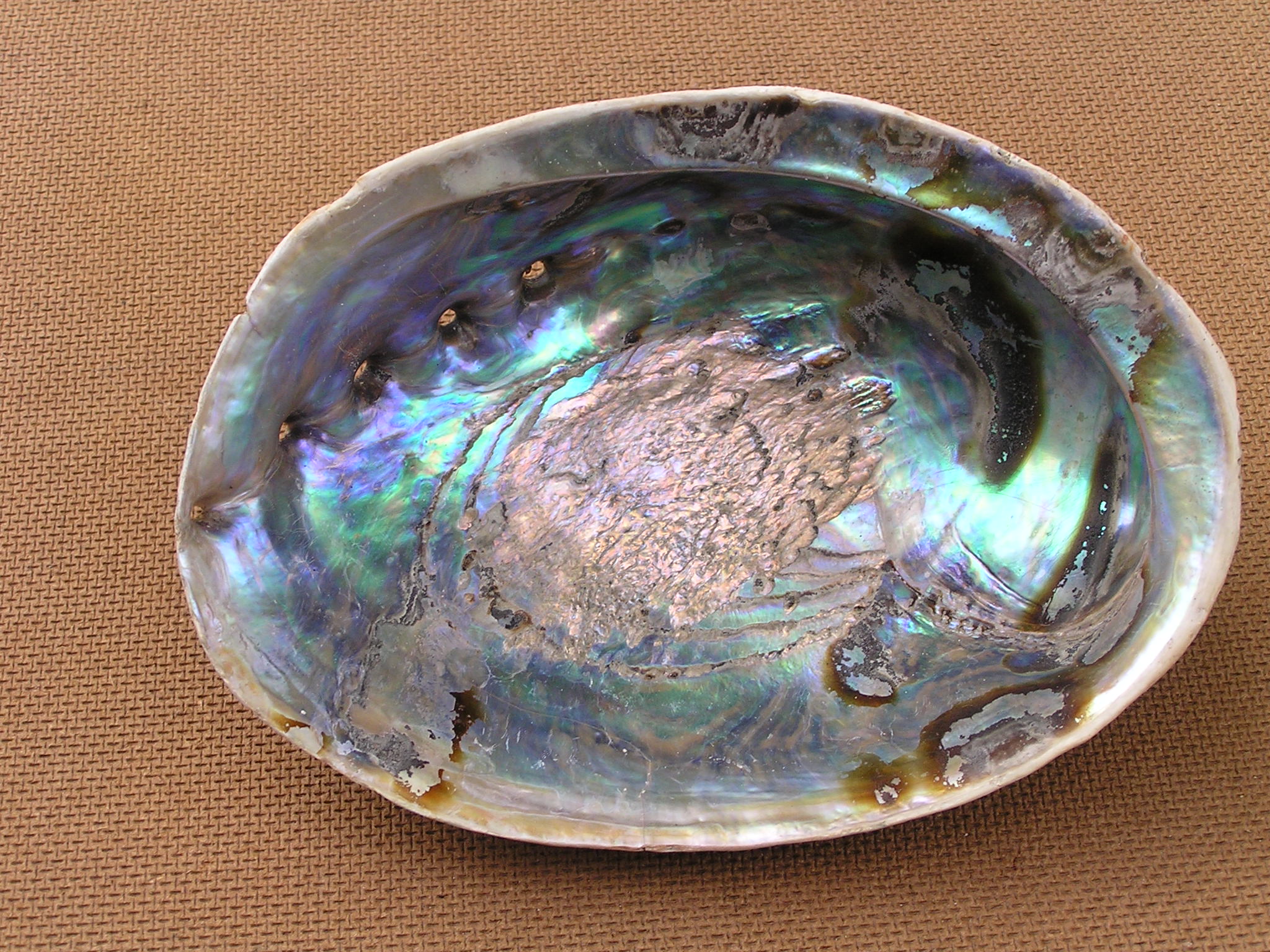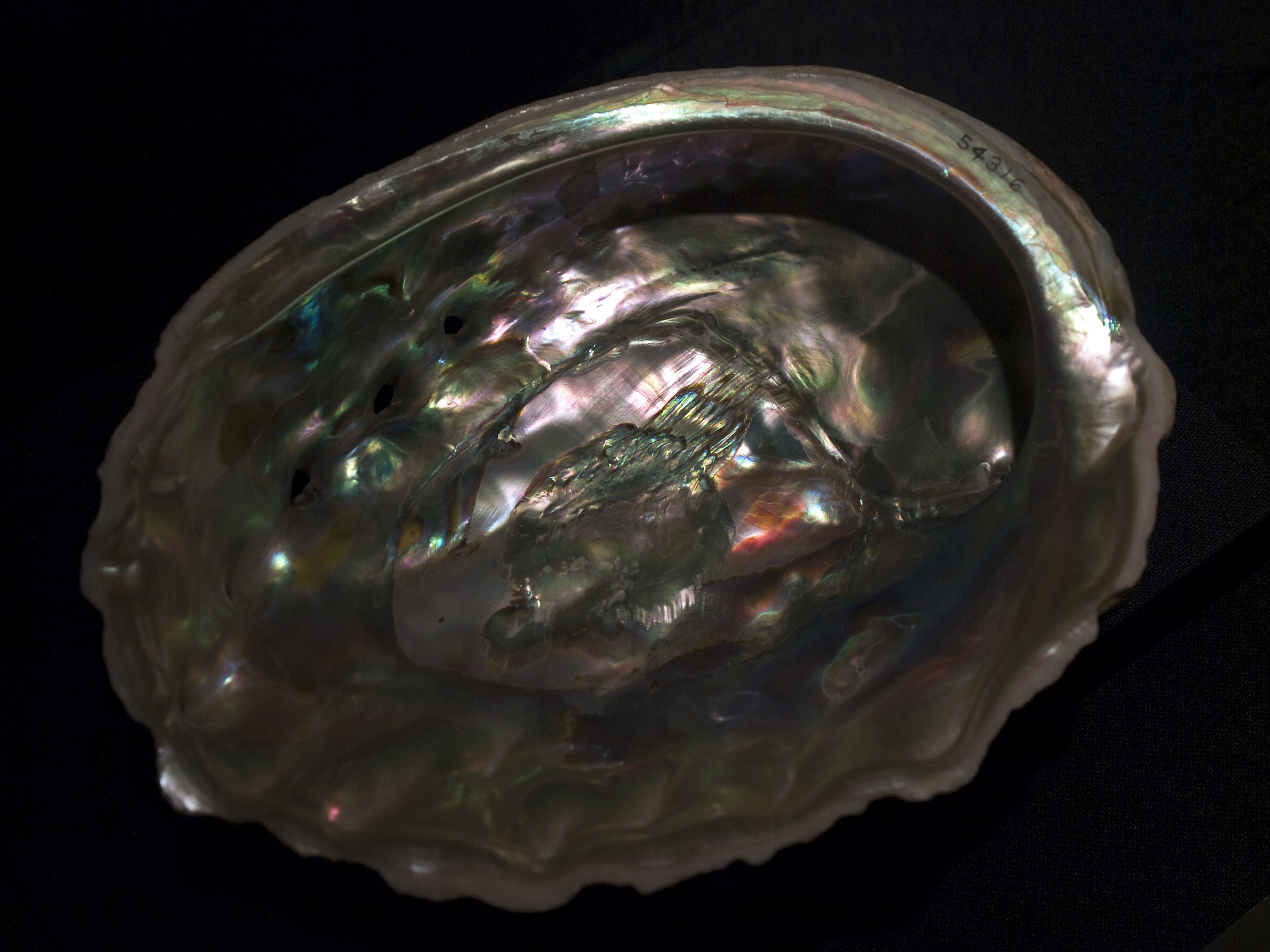|
List Of Edible Molluscs
This is a partial list of edible molluscs. Molluscs are a large phylum of invertebrate animals, many of which have shells. Edible molluscs are harvested from saltwater, freshwater, and the land, and include numerous members of the classes Gastropoda (snails), Bivalvia (clams, scallops, oysters etc.), Cephalopoda (octopus and squid), and Polyplacophora (chitons). Many species of molluscs are eaten worldwide, either cooked or raw. Some mollusc species are commercially exploited and shipped as part of the international trade in shellfish; other species are harvested, sold and consumed locally. Some species are collected and eaten locally but are rarely bought and sold. A few species of molluscs are not commonly eaten now, but were eaten in historical or prehistoric times. The list is divided into marine and non-marine (terrestrial and freshwater) species, and within those divisions, the lists are primarily arranged taxonomically, so that related species are grouped together ... [...More Info...] [...Related Items...] OR: [Wikipedia] [Google] [Baidu] |
Oysters Rockefeller
Oyster is the common name for a number of different families of salt-water bivalve molluscs that live in marine or brackish habitats. In some species, the valves are highly calcified, and many are somewhat irregular in shape. Many, but not all oysters are in the superfamily Ostreoidea. Some types of oysters are commonly consumed (cooked or raw), and in some locales are regarded as a delicacy. Some types of pearl oysters are harvested for the pearl produced within the mantle. Windowpane oysters are harvested for their translucent shells, which are used to make various kinds of decorative objects. Etymology The word ''oyster'' comes from Old French , and first appeared in English during the 14th century. The French derived from the Latin , the feminine form of , which is the latinisation of the Ancient Greek () 'oyster'. Compare () 'bone'. Types True oysters True oysters are members of the family Ostreidae. This family includes the edible oysters, which mainly belon ... [...More Info...] [...Related Items...] OR: [Wikipedia] [Google] [Baidu] |
Abalone
Abalone ( or ; via Spanish , from Rumsen ''aulón'') is a common name for any of a group of small to very large marine gastropod molluscs in the family Haliotidae. Other common names are ear shells, sea ears, and, rarely, muttonfish or muttonshells in parts of Australia, ormer in the UK, perlemoen in South Africa, and paua in New Zealand. Abalones are marine snails. Their taxonomy puts them in the family Haliotidae, which contains only one genus, '' Haliotis'', which once contained six subgenera. These subgenera have become alternate representations of ''Haliotis''. The number of species recognized worldwide ranges between 30 and 130 with over 230 species-level taxa described. The most comprehensive treatment of the family considers 56 species valid, with 18 additional subspecies. The shells of abalones have a low, open spiral structure, and are characterized by several open respiratory pores in a row near the shell's outer edge. The thick inner layer of the shell is compose ... [...More Info...] [...Related Items...] OR: [Wikipedia] [Google] [Baidu] |
Patella Ferruginea
''Patella ferruginea'', commonly known as the ribbed Mediterranean limpet, is a species of sea snail, a true limpet, a marine gastropod mollusk in the family Patellidae, one of the families of true limpets. It is a large limpet, native to the western Mediterranean Sea, and although common in the past, it is now rare and restricted to only a few locations. Description ''Patella ferruginea'' is a distinctive large limpet with a thick heavy shell. It can exceed in diameter, but most individuals are rather smaller than this. The robust, cone-shaped shell has thirty to fifty broad ridges and a wavy margin. The ribs are irregular and sometimes nodular; the shell is often worn smooth or covered with epibiotic organisms such as algae and barnacles. The external surface is cream-coloured or rusty brown, while the inside is marbled white with a dark muscle scar. The muscular foot is yellowish-orange with dark grey sides, and the tentacles are black. Juveniles have flattened shells which ... [...More Info...] [...Related Items...] OR: [Wikipedia] [Google] [Baidu] |
Patella Caerulea
''Patella caerulea'', is a species of limpet in the family Patellidae. It is known by the common names Mediterranean limpet and rayed Mediterranean limpet.''Patella caerulea'' Linnaeus, 1758. ''In'': MolluscaBase (2015). Accessed through: World Register of Marine Species. It is native to the . Description The size of the shell varies between 20 mm and 72 mm. The thin shell is depressed, spreading, usually more or less distinctly 6 or 7 angled. The riblets rather fine and notably unequal.G.W. Tryon (1891), Manual of conchology, structural and systematic: with illustrations of the species[...More Info...] [...Related Items...] OR: [Wikipedia] [Google] [Baidu] |
Cellana Sandwicensis
''Cellana sandwicensis'', common name the yellow-foot ʻopihi, is a species of edible true limpet, a marine gastropod mollusc in the family Nacellidae, one of the families of true limpets. Distribution This species is endemic to the islands of Hawaii. ''Cellana sandwicensis'' has been found in Taiwanese coastal waters, possibly spread by larvae transported in ship ballast water. Habitat This limpet lives lower in the intertidal zone than ''Cellana exarata'', the black-foot ʻopihi. They are found, strongly attached, sometimes with considerable force, with their foot to rocks or other hard substrates. They feed by grazing on algae. Description The large, muscular foot of the animal is yellow in the center but gray on its margin. The white head is short with one pair of tentacles with dark pigments on the backside. The flattened shell is dark green on the outside and silvery white on the inside. Its shape is almost oval and its apex is situated somewhat lower than the centr ... [...More Info...] [...Related Items...] OR: [Wikipedia] [Google] [Baidu] |
Cellana Exarata
''Cellana exarata'', common name the black-foot ʻopihi and Hawaiian blackfoot is a species of edible true limpet, a marine (ocean), marine gastropod mollusc in the family (biology), family Nacellidae, one of the families of true limpets. ‘Opihi are significant in Hawaiian history where they have had many uses such as food, tools, and jewelry. They are known as a “fish of death.” Classification Hawaiian Blackfoot limpets are gastropods belonging to the subclass Patellogastropoda and the family Nacellidae. They share many characteristics with many types of primitive mollusc other than gastropods, including a structure called the radula and shell micro-structure. Distribution This species is endemic (ecology), endemic to the islands of Hawaii and abundant on the basalt or elionite wave-exposed rocky windward shorelines. Habitat The limpet, C.exarata, resides in the high intertidal zone on the shores of the Hawaiian islands. The coastline on each island differs such that the ... [...More Info...] [...Related Items...] OR: [Wikipedia] [Google] [Baidu] |
True Limpets
The Patellogastropoda, common name true limpets and historically called the Docoglossa, are members of a major phylogenetic group of marine gastropods, treated by experts either as a clade or as a taxonomic order. The clade Patellogastropoda is deemed monophyletic based on phylogenetic analysis. Taxonomy Patellogastropoda was proposed by David R. Lindberg, 1986, as an order, and was later included in the subclass Eogastropoda Ponder & Lindberg, 1996. 2005 taxonomy Bouchet & Rocroi, 2005 designated Patellogastropoda, true limpets, as a clade, rather than as a taxon, but within included superfamilies and families as listed below. Families that are exclusively fossil are indicated with a dagger †: *Superfamily Patelloidea **Family Patellidae *Superfamily Nacelloidea **Family Nacellidae *Superfamily Lottioidea **Family Lottiidae **Family Acmaeidae Forbes, 1850 ***subfamily Acmaeinae Forbes, 1850 ***subfamily Pectinodontinae Pilsbry, 1891 ***subfamily Rhodopetalinae Li ... [...More Info...] [...Related Items...] OR: [Wikipedia] [Google] [Baidu] |
Pāua
Pāua is the Māori name given to three New Zealand species of large edible sea snails, marine gastropod molluscs which belong to the family Haliotidae (in which there is only one genus, ''Haliotis''), known in the United States and Australia as abalone, and in the United Kingdom as ormer shells. Pāua has entered English through common use in the New Zealand English dialect, and is both singular and plural, following the grammar rules of its original language. Species There are three species of New Zealand pāua: New Zealand's best known pāua species is ''Haliotis iris''. It is also the most common species, growing up to 18 cm (7") in width Habitat Pāua are commonly found in shallow coastal waters along rocky shorelines in depths of 1 to 10 metres (3' to 30'). There is clear distinction between juvenile and adult habitats for ''Haliotis iris'', pāua less than 7 cm (3") occur in crevices and under stones in the shallow intertidal zone while adults are f ... [...More Info...] [...Related Items...] OR: [Wikipedia] [Google] [Baidu] |
White Abalone
The white abalone, scientific name ''Haliotis sorenseni'', is a species of large sea snail, a marine gastropod mollusk in the family Haliotidae, the abalones.Rosenberg, G. (2014). Haliotis sorenseni. Accessed through: World Register of Marine Species at http://www.marinespecies.org/aphia.php?p=taxdetails&id=445362 on 2014-10-29 The white abalone is an endangered species in the United States; it may now have the smallest population of all eight of the abalone species on the west coast of North America. Distribution Historically the white abalone ranged from Point Conception, California to Baja California, Mexico, and was found especially on the offshore islands. In the most northerly part of the California range, white abalone were reported as being more common along the mainland coast. However, in the middle portion of the California range, they were noted to occur more frequently at the offshore islands, especially San Clemente and Santa Catalina Islands. At the more sou ... [...More Info...] [...Related Items...] OR: [Wikipedia] [Google] [Baidu] |
Red Abalone
''Haliotis rufescens'' (red abalone) is a species of very large edible sea snail in the family Haliotidae, the abalones, ormer shells or paua.Rosenberg, G. (2014)''Haliotis rufescens'' Swainson, 1822.Accessed through: World Register of Marine Species on 2014-10-28 It is distributed from British Columbia, Canada, to Baja California, Mexico.Cowles, D. (2005). Haliotis rufescens.'' Biological Department, Walla Walla University. Retrieved 25 February 2015.NatureServe. 2015''Haliotis rufescens''.NatureServe Explorer. Version 7.1. February 11, 2016. It is most common in the southern half of its range. Red abalone is the largest and most common abalone found in the northern part of the state of California. Habitat Red abalone live in rocky areas with kelp. They feed on the kelp species that grow in their home range, including giant kelp (''Macrocystis pyrifera''), feather boa kelp (''Egregia menziesii''), and bull kelp (''Nereocystis luetkeana''). Juveniles eat coralline algae, ... [...More Info...] [...Related Items...] OR: [Wikipedia] [Google] [Baidu] |
Haliotis Corrugata
The pink abalone, scientific name ''Haliotis corrugata'', is a species of large edible sea snail, a marine gastropod mollusk in the family Haliotidae, the abalones.Oliver, A.P.H. (2004). ''Guide to Seashells of the World.'' Buffalo: Firefly Books. 18. Subspecies * ''H. c. corrugata'' W. Wood, 1828 (synonyms: ''Haliotis diegoensis'' Orcutt, 1900; ''Haliotis nodosa'' Philippi, 1845) * ''H. c. oweni'' Talmadge, 1966 - synonym: ''Haliotis oweni'' Talmadge, 1966Rosenberg, G. (2010). ''Haliotis corrugata'' Wood, 1828. Accessed through: World Register of Marine Species at http://www.marinespecies.org/aphia.php?p=taxdetails&id=445308 on 2011-08-24 Distribution Pink abalones can be found along the Pacific coast of North America from Point Conception, California to Bahia de Santa Maria, Baja California Sur, Mexico. Description The shell is thick and characterized by strong corrugations and is more circular than other American abalones. The two to four open respiratory aper ... [...More Info...] [...Related Items...] OR: [Wikipedia] [Google] [Baidu] |




.png)



